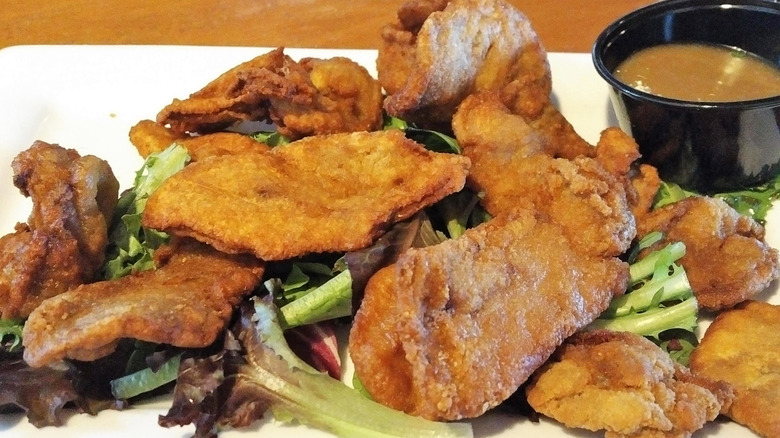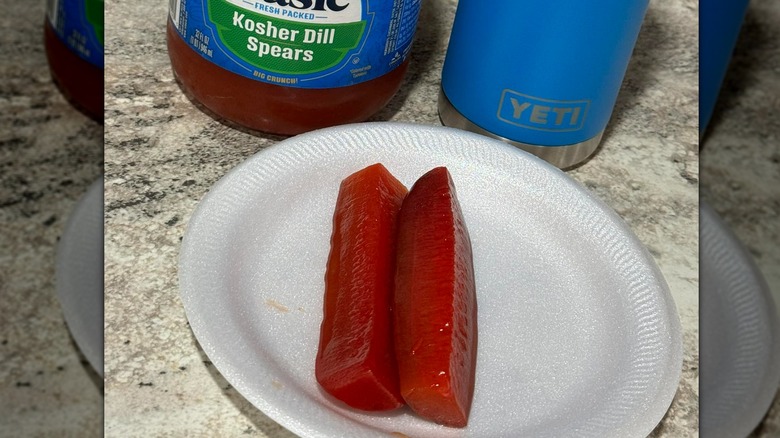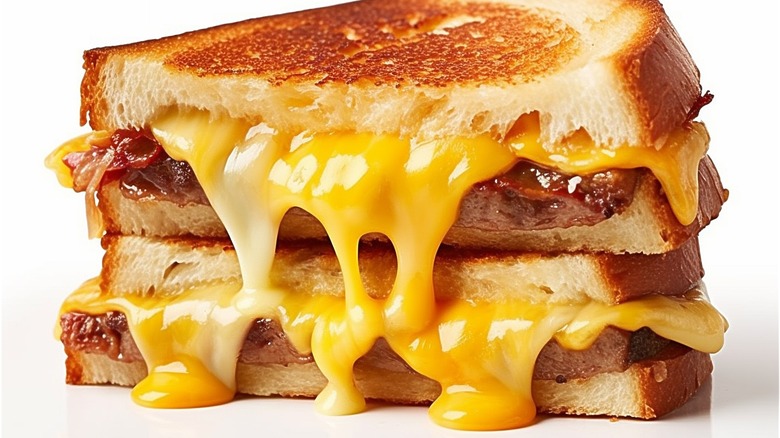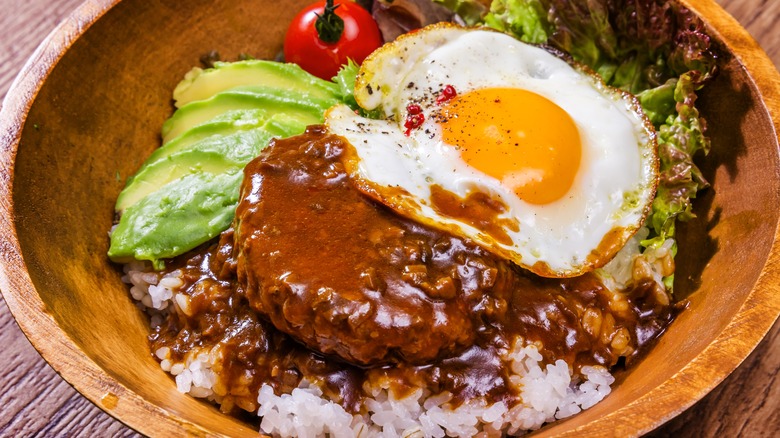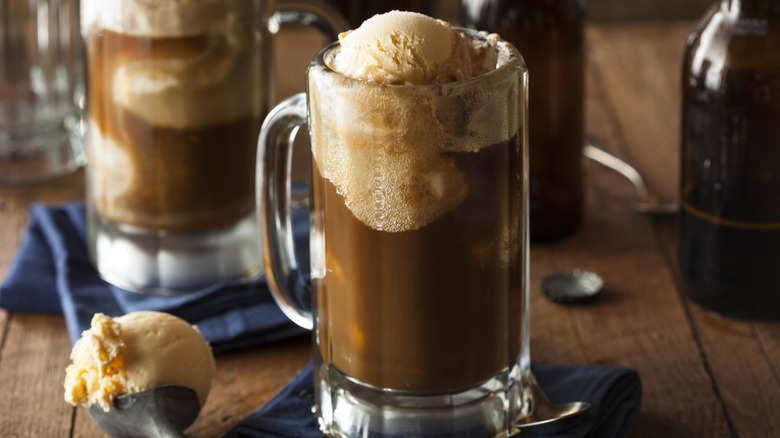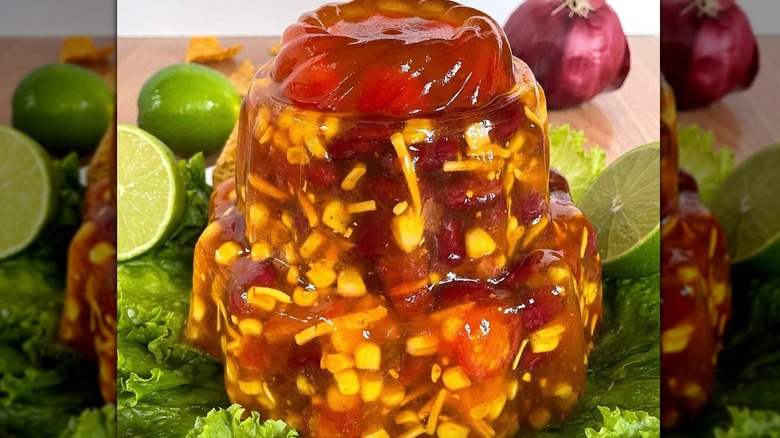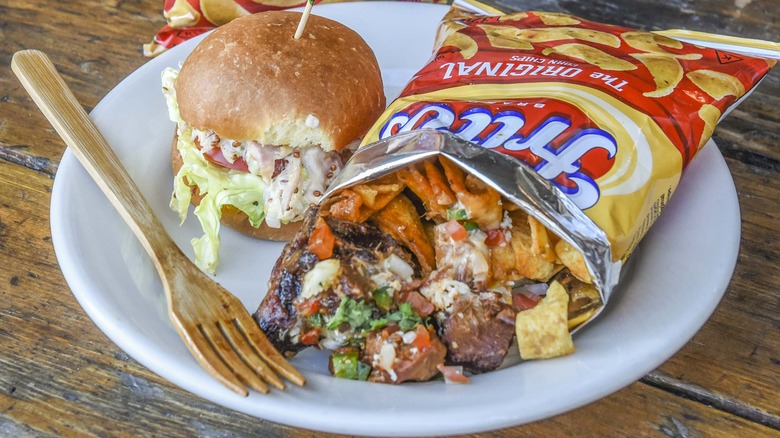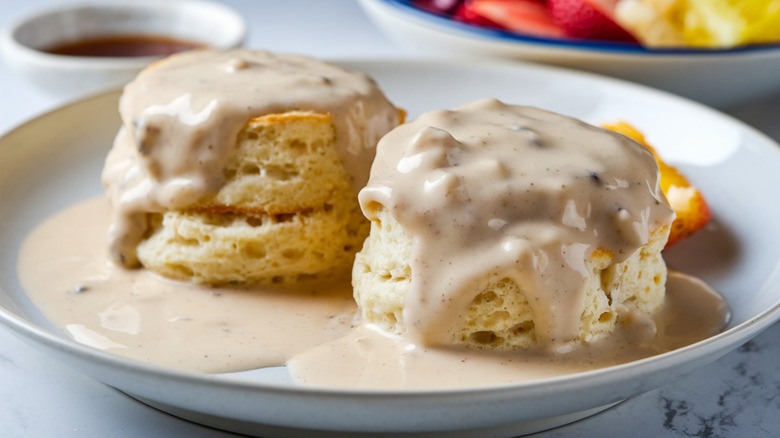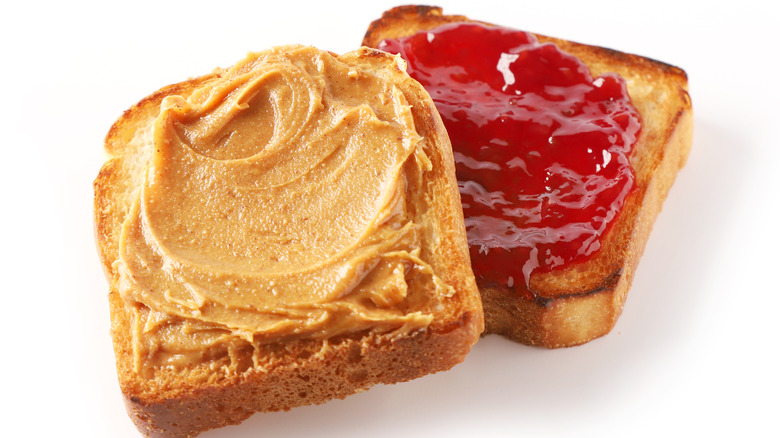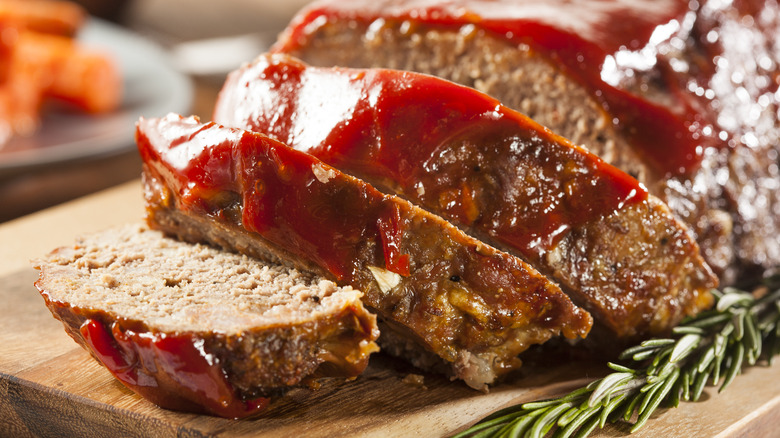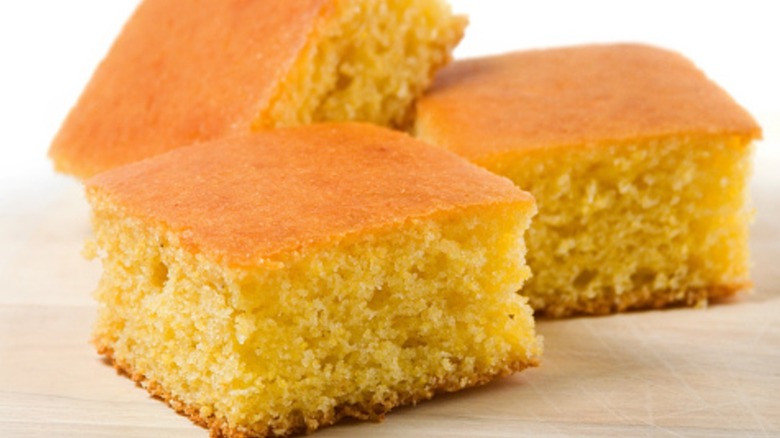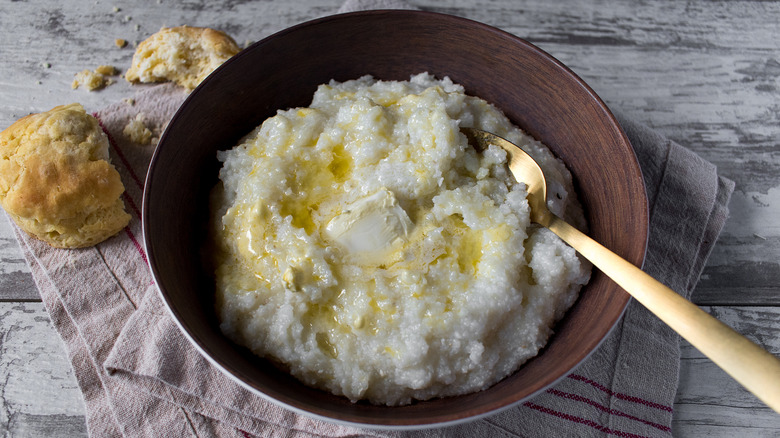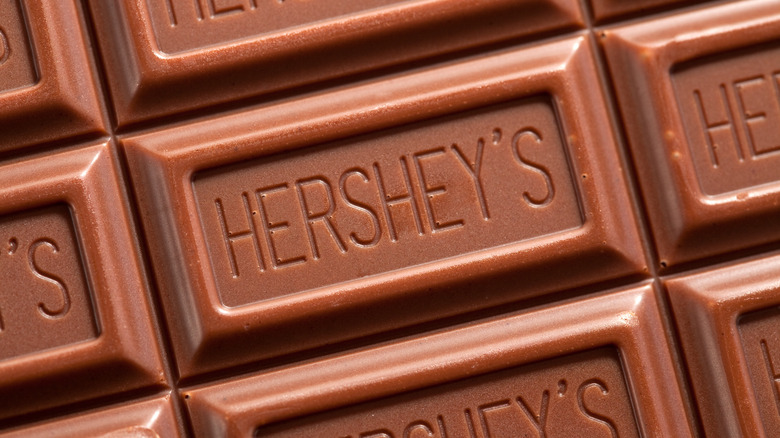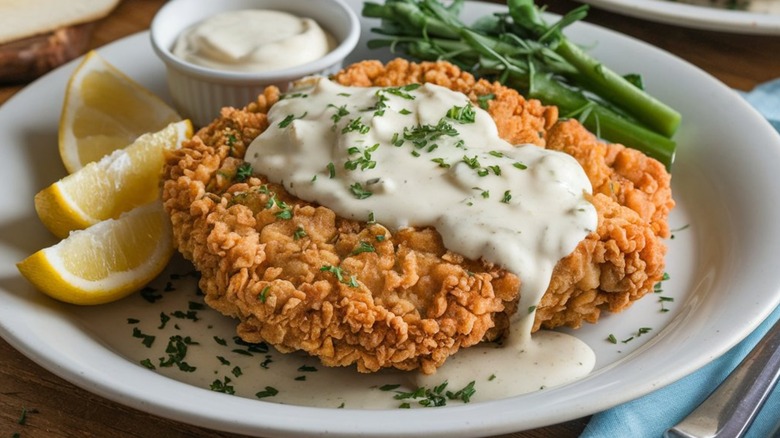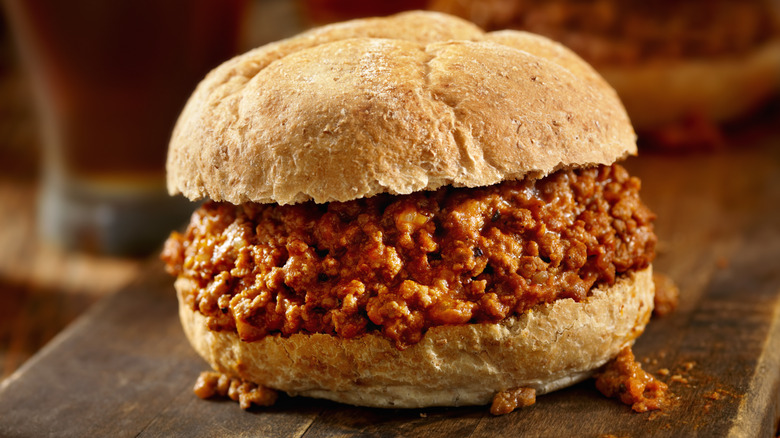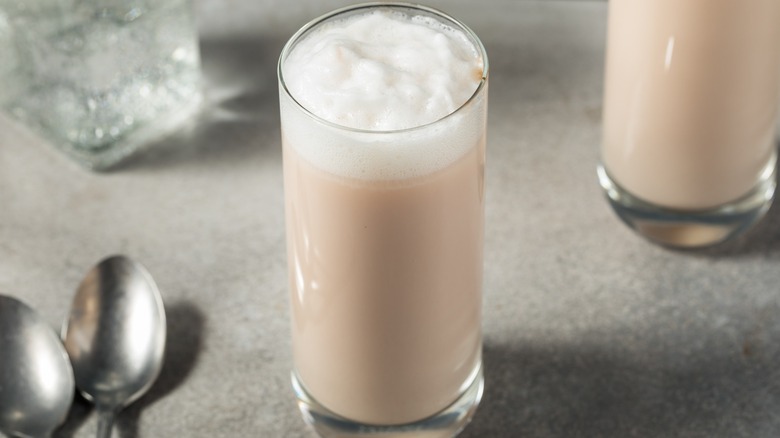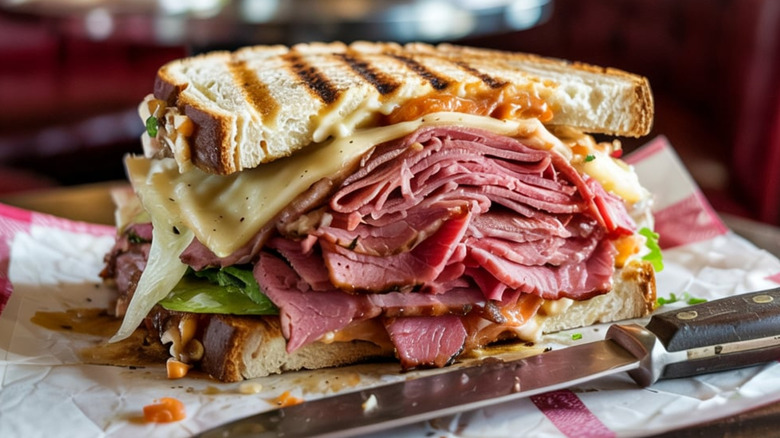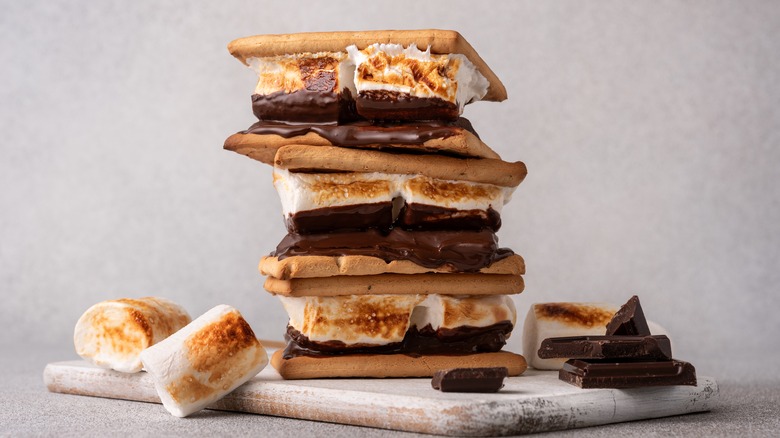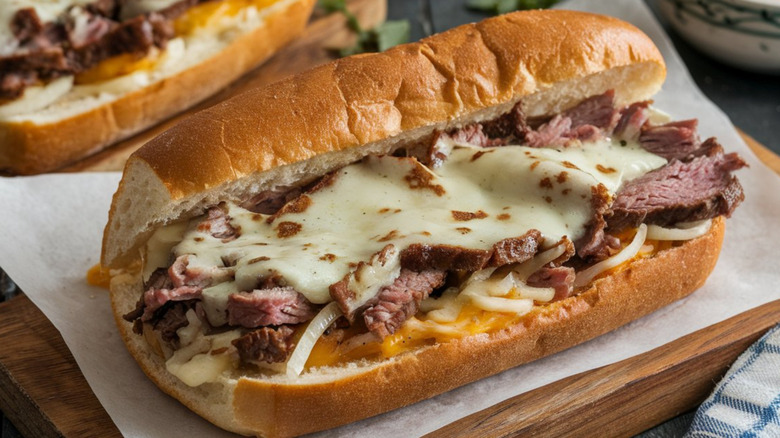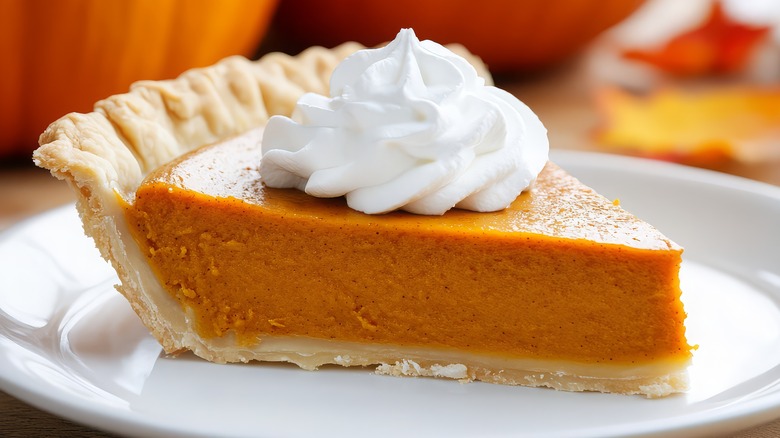21 Beloved American Foods That The Rest Of The World Doesn't Get
We may receive a commission on purchases made from links.
American culture is arguably the United States' most successful global export since the end of World War II. Of course, we gave the world the mighty cheeseburger, fries, and milkshake, but there's so much more to U.S. cuisine than the fast-food franchise — and if you aren't from here or have never been, you may not realize just how much more there really is.
Many people overseas think American food is unhealthy and served up in gigantic portions, and even base that off of the fact that, yes, some of it is banned in other countries for one reason or another. Yet we know the U.S. is a rich, diverse culinary landscape. Considering the voracious appetite for our culture, it's odd that so few of our most beloved foods haven't followed in the hamburger's footsteps. Here's an informative look at other quintessential American dishes that the world just doesn't get.
Rocky Mountain oysters
The land of "big country" may be a thing of the past, but it's not just historians and entertainers who have a love for the Wild West. Across Nevada, Colorado, Texas, Oklahoma, and Kentucky, you can find Rocky Mountain oysters, a dish that has its origins in the harsh frontier life of the 19th century.
Also known as calf fries, Rocky Mountain oysters are the testicles of young castrated bulls, removed to reduce aggression in male cattle, and eaten because ranchers wouldn't let good meat go to waste. Rocky Mountain oysters have a chewy texture similar to real ones or calamari, as well as a gamey, chicken-like flavor. They're often served fried, with horseradish, tangy, or spicy sauces.
Kool-Aid pickles
The phrase "drinking the Kool-Aid" does mean having unwavering loyalty to something, so you could say that many Americans "drank the Kool-Aid" of Koolickles. And many people outside of the U.S. don't know the popular powdered drink is not only delicious, it's also a key ingredient in an important Southern staple: Koolickles. Nobody really knows who invented them, but they know where: the hot and steamy Mississippi Delta area.
As well as putting their pickles in the freezer, someone had the genius idea of using red fruit Kool-Aid (usually made to double strength) as a marinade for sliced or whole pickles. The low-cost savory snack was transformed into a sweet-and-sour icon. Food manufacturers and restaurants soon jumped on the bandwagon, and today, Koolickles are a much-loved addition to many a Southern menu.
American cheese
Post a photo of a hamburger on social media, and you can almost guarantee someone outside the United States will have something bad to say about the American cheese. Why all the hate for this store cupboard staple? Traditionally, it's made by combining cheddar and Colby cheeses, though some brands have added ingredients, including whey and milk protein concentrates, preservatives, and emulsifiers.
The blending thing isn't unique to the U.S. We have Swiss cheese makers to thank for the process, which prevents American cheese turning into a greasy mess when melted. Sure, some of it is labeled "pasteurized process cheese," so it's not, strictly speaking, "real" cheese, but who cares? With its mild flavor and smooth, creamy texture, it's delicious on everything.
Loco moco
Hawaii is famous for its breathtaking beaches and rich culture, but one of its most celebrated dishes is a mystery to the wider world. Part comfort food, part hangover cure, loco moco is a relatively recent invention. In her book "The Food of Paradise: Exploring Hawaii's Culinary Heritage," Rachel Lauden says it was created in 1949 at the-then Lincoln Grill for a group of hungry football players.
Loco moco (which means "crazy boy") comprises a plate of fluffy white rice with a hamburger doused in gravy and a sunny side-up egg on top, though you can also have caramelized onions, or fried mushrooms. The burger can be swapped for shrimp, fish or even Spam, and in these instances, you'll find shrimp or Spam loco on the menu instead of the OG.
Root beer
While many people might know root beer is a drink in the United States, unlike Coca Cola, barely anyone beyond our shores has tasted it. Traditionally, root beer was made as an alternative to undrinkable water, and flavored using the sarsaparilla vine or the bark of the sassafras tree.
Some Europeans who have had root beer think it tastes like cough syrup, according to this Reddit thread. That's because both sarsaparilla and sassafras were used as medicines by Native Americans, but these days, the majority of commercial root beer is made with artificial ingredients. Many people brew their own versions of this classic American drink, creating the ultimate root beer floats.
Jell-O salad
There are many things about American food the world doesn't get, like sandwiches you have to dislocate your jaw to eat, or high fructose corn syrup. None of them come close to the exquisite conundrum that is the Jell-O salad. In "Jell-O: A Biography," author Carol Wyman explained how, alongside other processed foods, these desserts took off after the Second World War, giving rise to a uniquely American culinary art form.
A Jell-O salad enveloped a range of ingredients, from shrimp to marshmallow, in a fruity bubble, but the real points were for presentation. Beautifully crafted radish or tomato rosettes nestled alongside wobbling creations topped with cottage cheese or Cool Whip. Strangers to these shores may gag, but generations of Americans have nothing but love for Jell-O salads. Just don't store yours like Jell-O shots.
Frito pie
Frito pie, according to the 1962 recipe printed on the bag of chips, is a heated can of chili poured into a freshly opened bag of Fritos, topped with chopped onions and grated cheddar. While visiting New Mexico for a 2013 episode of his show "Parts Unknown," Anthony Bourdain witheringly dubbed it a "colostomy pie," but also added it was "delicious."
There's a lot of debate about who invented Frito pie, but company founder Charles Doolin's daughter Kaleta claims the concoction was first offered to the Dallas Dietetic Association in 1949 in her book "Fritos Pie: Stories, Recipes, and More." It's sometimes even referred to as a "walking taco."
Biscuits and gravy
Most Brits will recoil at this iconic American food, for two reasons. First, to them, a biscuit is almost always sweet like a cookie. They would more likely call the biscuits at the heart of this recipe scones — which can be savory or sweet. Second, British gravy is almost always brown: Any other color would suggest something has gone horribly wrong.
What they don't understand is biscuits and gravy helped build the United States. Created by laborers in Southern Appalachian mills, it relied on ingredients that fluctuated with people's fortunes. When times were good, the biscuits were made with better flour and fluffier, while in leaner periods, the gravy became thicker to compensate. Biscuits, even those that come in a can, remain a Southern staple, though the type of gravy can vary depending on the state.
PB&Js
In 1901, Julia Davis Chandler, writing in The Boston Cooking School magazine, suggested readers make sandwiches using "peanut paste, whatever brand you prefer, and currant or crab apple jelly." She had created the PB&J: Probably the most iconic of American foods.
Despite being the go-to lunch for kids and easily upgradable for adults, PB&Js have singularly failed to take off elsewhere in the world. In a 2022 episode of "The Great British Baking Show," judges Prue Leith and Paul Hollywood were skeptical about a recipe combining berries with peanut butter. The online backlash was harsh but fair. One X commenter quipped, "It's such important work to teach the British about PB&Js but I for one am exhausted."
Meatloaf
Growing up in the United States meant meatloaf was a part of many people's childhoods — whether we liked it or not. Like hamburgers, it's an iconic American food that cuts across the social divide. Traditionally made from chopped meats like beef or turkey, mixed with breadcrumbs and egg, and topped with ketchup, even lower-income households could make a hearty meatloaf. More affluent families could add extra ingredients, like spices, while modern versions switch out the ketchup topping.
Of course, every country has recipes that cobble together leftovers or scraps of ingredients, but they don't have the same cultural significance as American meatloaf. Perhaps the new generation of cooks will not only make it their own, but send it out into the world, too, so everyone can get a taste.
Cornbread
Simple flatbreads made from corn flour appear across the world, from North and South America, to Africa and India. However, cornbread as many of us know it today is deeply rooted in the cuisine and culture of the Southern United States. Back in the 19th century, poorer folks made a batter from cornflour and water, before cooking their patties on a heated farm hoe or griddle. Those with money added sugar, milk, and eggs to create a fluffier, tastier form of cornbread.
While the debate rages about whether cornbread is any different from corn pone — both use the same ingredients – the fact remains neither have really made it beyond our shores. Whether you make it yourself or spice up a boxed version, lather it with butter and serve it with everything for a true taste of America.
Grits
Ground corn is responsible for two foods that are inextricably tied to United States culture: Cornbread and the savory oatmeal known as grits. To the untrained eye (or anyone outside the U.S.) it looks a little like wallpaper adhesive but millions of Americans grew up eating some form of this dish, which was most often eaten by the very poor.
Although grits has deep roots in Southern cooking, as a food it can be traced back to the arrival of British colonists in Virginia, who were presented with bowls of it by Native Americans. More recently, as Erin Byers Murray reveals in her book "Grits: A Cultural and Culinary Journey Through the South," it is finding a new audience in fine-dining restaurants, whose chefs are putting grits on the menu.
Hershey's chocolate
There are some American foods that, no matter how good we know they are, no one else understands. Hershey's chocolate is one. The company behind a range of flavored kisses, bars and other snacks is hugely popular in the United States, but has a terrible reputation abroad. In 2016, Hershey's launched products in France ahead of a wider European push, but they've yet to really take off.
Some say it's because Hershey's is made with butyric acid, giving it the distinct, tart taste we love. While Hershey's told HuffPost it wasn't true, it has put off many potential fans. Others say the cocoa powder is not as finely ground, giving it an unpleasant mouthfeel. This Quora poster sums up the overseas attitude, "I'd rather shove a cockroach up my nose, than eat Hershey chocolate."
Chicken fried steak
Whether it was German immigrants bringing wienerschnitzel to the United States or a small-town chef misreading an order, chicken fried steak has definitely become a much-loved part of the American culinary landscape. Let's be honest, what's not to love? Like the best fried chicken, a thin beef steak is dipped in egg and breadcrumbs before being cooked in a skillet — it's Southern comfort food central.
Sadly, many foodies outside the U.S. don't see it that way. Writing for Business Insider, Fliss Freeborn tried her hand at this iconic dish. Apart from not getting why "why anyone would want to deep-fat fry a perfectly innocent steak," she grappled with Imperial measurements, and the gravy that traditionally accompanies chicken fried steak. In the end, Freeborn decided the best thing was to hop over the pond and "try an authentic version made with some famous Southern hospitality."
Sloppy joes
Proof that in the United States we really will put anything between two pieces of bread and call it a sandwich, comes in the form of the sloppy joe. Millions of American school kids were raised on it: a blend of ground beef in a sweet tomato sauce, poured over a soft, white roll. Think of it as a wetter, saucier cousin to the hamburger, (though nothing like the New Jersey version) but without the latter's global popularity.
Of course, sloppy joe sauce comes in a can and the original beef recipe can be tweaked in myriad different ways, from a hot dog topping to slathered over Texas toast. Foreign tourists or overseas foodies might not understand the sloppy joe's appeal unless they visit the United States, because once tasted, they are never forgotten.
Egg cream
The U.S. is literally vast that it's understandable that some foods don't make it across the states, never mind abroad. So it goes with egg cream: a New York beverage that has been beloved by residents for more than 100 years.
Nobody's exactly sure how it got its name, but two things are certain: It doesn't have any eggs, and it doesn't contain any cream. Instead, it's a blend of whole milk, seltzer or soda water and thick chocolate or vanilla syrup — Fox's U-Bet only, for an authentic taste of Brooklyn. New Yorkers love it, but the drink can be an acquired taste. Grub Americana described egg cream as, "Refreshing," but added, "It was simply a glass of fizzy chocolate milk."
Girl Scout cookies
For around 50 years in the United Kingdom, scouts raised money for their organizations during "bob-a-job week" (a "bob" being a shilling). While that ended in the 1990s, they should follow America's Girl Scouts, whose annual cookie sales are still going strong. Generally sold between January and April, around 200 million boxes changed hands in 2024, earning $4.5 million, according to Next Gen Personal Finance.
U.K. youngsters amazed at this masterful money making should know why it's so successful. The cookies are made by licensed bakers ABC Bakers and Little Brownie Bakers and not the Girl Scouts themselves. They come in limited varieties that have evolved over the years, including thin mints, peanut butter sandwiches or do-si-dos, and shortbread/trefoils, and some of them are gluten-free and vegan.
Reuben sandwich
Globetrotters may recognize some elements of this classic sandwich in various locations, but the Reuben is as iconic an American food as they come. Whether it was created in Omaha, New York City, or elsewhere, the key ingredients are the same: corned beef, Swiss cheese, sauerkraut, and Russian dressing, piled up between two slices of toasted rye bread.
Despite its popularity in the United States, the Reuben sandwich is rarely seen on overseas restaurant or cafe menus. Some people believe that could be because it's a tricky thing to construct and get the balance of all those flavors exactly right, while others are happy to keep this national foodie treasure very much on the down-low.
S'mores
Lots of countries have marshmallows, sweet crackers, (or biscuits, if you're British) and chocolate. But only in the United States did we smoosh them all together to create the s'more. We love them so much that there's a national day in August, devoted to this combination of graham cracker, toasted marshmallow, and Hershey's chocolate.
These sweet treats are most popular in the Midwest and who can blame folks? The ingredients for s'mores had been around for years before a 1927 Girl Scouts guidebook brought them together in a recipe that was dubbed "Some More" until around 1971. As recently as 2024, s'mores were still a mystery outside the U.S., as this Reddit thread reveals.
Cheesesteaks
Who would have thought that the simple combination of crusty bread, thinly sliced beef and melted cheese would become such a part of one city's identity? Yet that's the case for Philadelphia and the cheesesteak. A relatively recent addition (less than 100 years old) to the American culinary landscape, it was created in the 1930s by hot dog stand owners Pat and Harry Olivieri, who wanted to try something new.
They had a near-instant hit on their hands — but with it came great responsibility. Vendors know not to mess with the recipe or the quality, or they'll see less the City of Brotherly Love and more a horde of hangry Philadelphians. Strangely, even though there are lots of sandwich makers worldwide, they rarely offer cheesesteaks. Though, to be fair, it's hard to find a decent cheesesteak in the U.S. outside of the Philly area.
Pumpkin pie
One of the biggest Thanksgiving traditions is serving up creamy pumpkin pie, one of the dishes explored in "America: The Cookbook," by Gabrielle Langholtz. She revealed that this winter staple has its origins in French and English cooking, which is ironic, considering neither country — nor anywhere else — seems to serve up pumpkin pie.
Come Halloween, while people across Europe are happily carving pumpkins into lanterns, across America, home cooks are busy preparing deep dishes of this delicious dessert, though it's definitely not beloved by all Americans. Take it or leave it — no judgment here.

